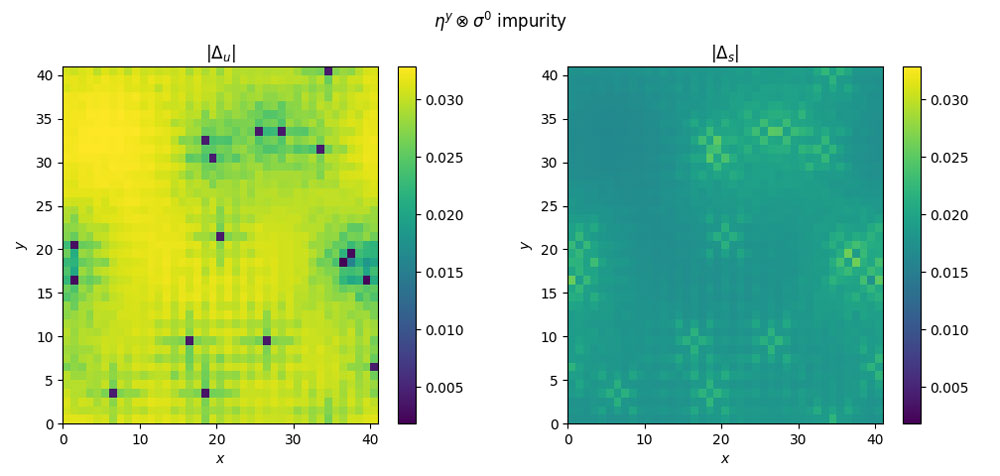PC-3-3
Nucleation of exotic staggered singlet in dirty Rashba bilayers
15:45-16:00 28/11/2023
*B.K. Nally and P.M.R. Brydon
Department of Physics and MacDiarmid Institute for Advanced Materials and Nanotechnology, University of Otago, Dunedin, New Zealand
Rashba bilayers, with opposite sign spin-orbit coupling on each layer, are a minimal model of locally noncentrosymmetric systems. The behaviour of the superconducting states such systems host has been of recent interest, as for sufficiently strong spin-orbit coupling a singlet state where the pairing potential has opposite sign on each layer (the "staggered state") can closely compete with the conventional singlet state with the same sign on both layers (the "uniform state"). An example of this is the field induced uniform-staggered transition in CeRh2As2 (1). Models of such systems thus far are usually of clean, bulk systems, but with the unavoidability of impurities in real-world samples, it is worthwhile investigating the effect of disorder on the transition from the uniform to the staggered state.
Here we present our findings on the effect concentrations of different impurities have on the superconducting state in a Rashba bilayer system in the presence of applied magnetic field. Three cases were considered: randomly placed potential or magnetic impurities within the layers, and also an interlayer scattering impurity. We found that the critical field for the transition is suppressed by all impurities studied, significantly so for the interlayer scattering impurity. This impurity was also found to be able to nucleate the staggered state at zero field at concentrations above about 1%. Our results were obtained numerically with the Kernel Polynomial Method (2), and will be discussed with regards to superconducting fitness and symmetry considerations.
(1) S. Khim, et al., Science 373, 1012 (2021)
(2) A. Weisse, G. Wellein, A. Alvermann, H. Fehske, Rev. Mod. Phys. 78, 275 (2006)
PMRB was supported by the Marsden Fund Council from Government funding, managed by Royal Society Te Apārangi
